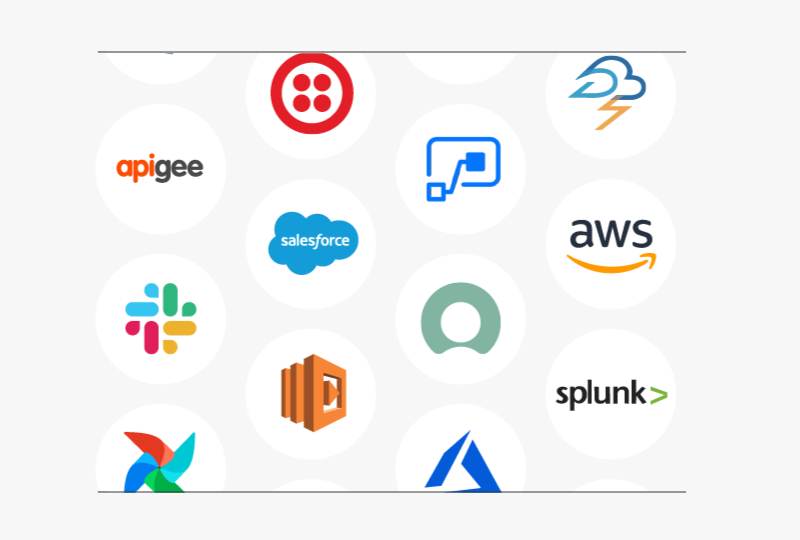Enterprise Low-Code Workflow Orchestration Tool
Centralize and optimize any IT or business process with Redwood’s cloud-native platform.

Eliminate Manual Processes From Your Cloud Workflows
-
Orchestrate Across The Enterprise
-
Cloud-Native Automation For Scalability
-
Simple, Secure Architecture
-
Expand Your Automation Use Cases

Orchestrate Across The Enterprise
Redwood makes it easy to automate workflows and manage dependencies across any on-premises, cloud-based or hybrid environment. Automate any task or batch job with Redwood’s no-code process steps, sequences, calendars and more.
- Execute workflow processes in real-time based on detected source files, data, events, messages and more
- Seamlessly coordinate and integrate legacy systems, APIs, open-source apps, web services (Apache Airflow, Azure Functions) and containers (Kubernetes, Docker)
- Empower DevOps with custom workflows and consumable automation services/microservices using native SOA APIs and formats
- Streamline data processing across ERP, CRM, finance, big data pipelines for artificial intelligence and more

Cloud-Native Automation For Scalability
Redwood offers the only workload automation solution purpose-built for delivery as SaaS from the start. Eliminate the hassle of hosting, deploying and maintaining your automation platform. Easily connect to major cloud providers (AWS, Azure, Google Cloud).
- Single-tenant cloud architecture with zero-effort maintenance and guaranteed 99.95% uptime
- Easily set flexible load balancing and process priorities across applications to eliminate bottlenecks and delays
- Control servers and run scripts with lightweight, self-updating agents for Windows, Linux, AIX, HPUX, macOS, OpenVMS and Solaris
- Real-time metric overviews and dashboards with alerts and SLA notifications that enable teams to resolve issues before they impact performance
By moving away from time-based tasks, we now work much smarter. Today, Redwood is automating the process as a whole–and has eliminated the need for manual work. With greater visibility over processes, we see the full business picture and can make better informed business decisions.
Stefan Wiedenmann, Central Scheduling Backend Architect at BSH

Simple, Secure Architecture
- Access SAP, Oracle, AS/400, VMS and other applications and web services directly through TLS 1.3 encrypted, agentless connections
- Use built-in authentication or SSO/SAML 2.0+ integration such as Okta, Ping Identity, PingFederate, or Microsoft Azure AD
- Establish a comprehensive audit trail for all process and user activity and enforce business rules across the enterprise
- Rely on Redwood’s ISO 27001, SOC 2 and CSA STAR Level 1 certifications, best-in-class SaaS security policies and regular penetration tests

Expand Your Automation Use Cases
Redwood is designed to expand as your IT team adopts new technology and cloud services. All functionalities and connectors are included with simple pay-for-what-you-use pricing plans.
- Add as many servers, applications and environments as you need without worrying about extra costs or budget restrictions
- Automate any application with a drag-and-drop workflow designer and use any connector with no additional licensing
- Enable non-IT team and help desk users to leverage automation through an intuitive self-service user interface
- Gain new features and deploy security patches through automatic updates that complete in minutes
Orchestrate The Entire Workflow Lifecycle
Frequently Asked Questions
What is workflow orchestration?
Workflow orchestration refers to the organization of sequential tasks to complete an end-to-end process. For example, a workflow might include multiple discrete tasks that pass dependencies or data across multiple applications or systems. Orchestration involves integrating those applications with necessary infrastructure so that tasks can be triggered in sequence without the need for human intervention. Automation platforms such as Redwood make it easy to orchestrate workflows across on-premises and cloud-based systems. See what you can achieve with Redwood.
What is the difference between workflow and orchestration?
A workflow is a series of discrete tasks that trigger sequentially in order to pass dependencies or data downstream. Orchestration involves workflows and also includes the infrastructure needed for those workflows to execute. For example, workflow orchestration can involve spinning-up virtual machines to complete a series of transactions that include delivering reports to key stakeholders. Automation platforms such as Redwood make it easy to orchestrate workflows across on-premises and cloud-based systems. See what you can achieve with Redwood.
Is Redwood used for workflow orchestration?
Yes, Redwood makes it easy to orchestrate workflows end-to-end, regardless of whether you’re relying on cloud-based or on-premises infrastructure. Workload balancing and process priorities eliminate bottlenecks so workflows complete on time. Redwood also includes an extensive library of ready-to-use templates, wizards, calendars and schedules with over 25 scripting languages and interfaces so you can automate anything. See what you can achieve with Redwood.
